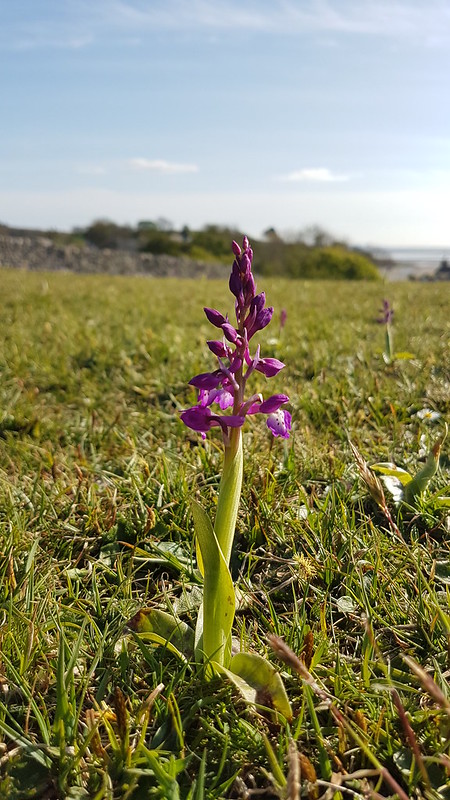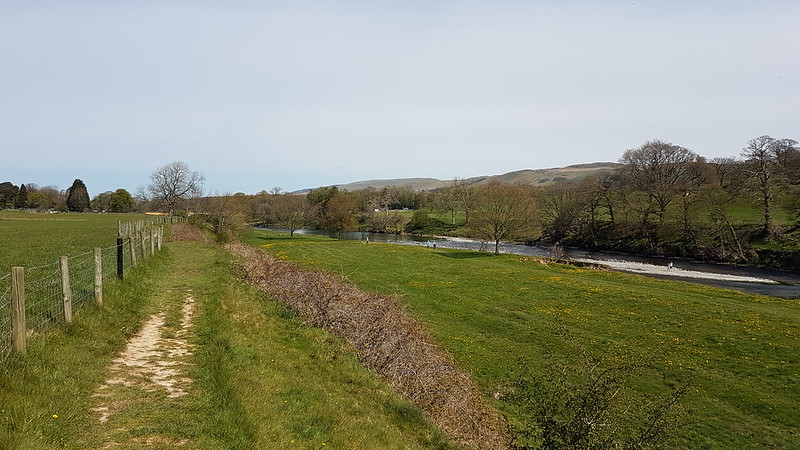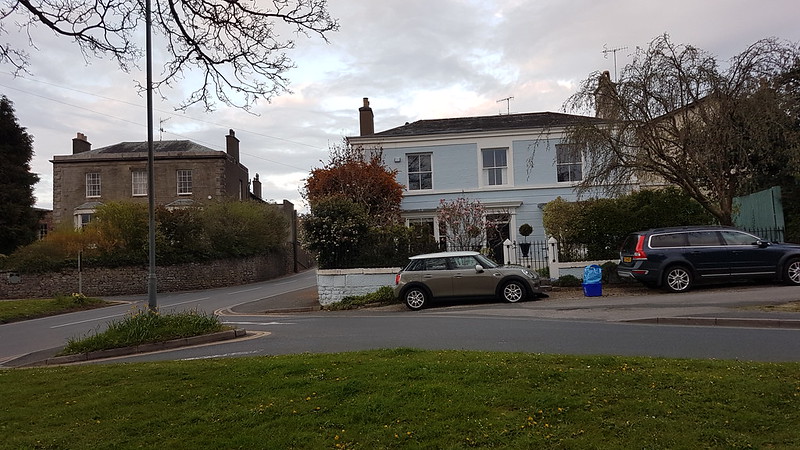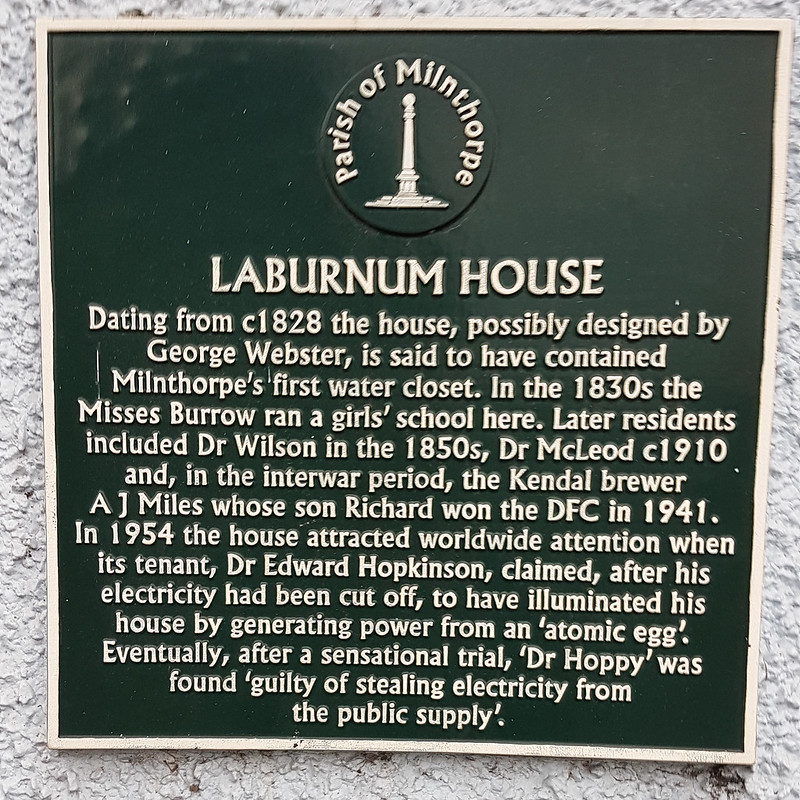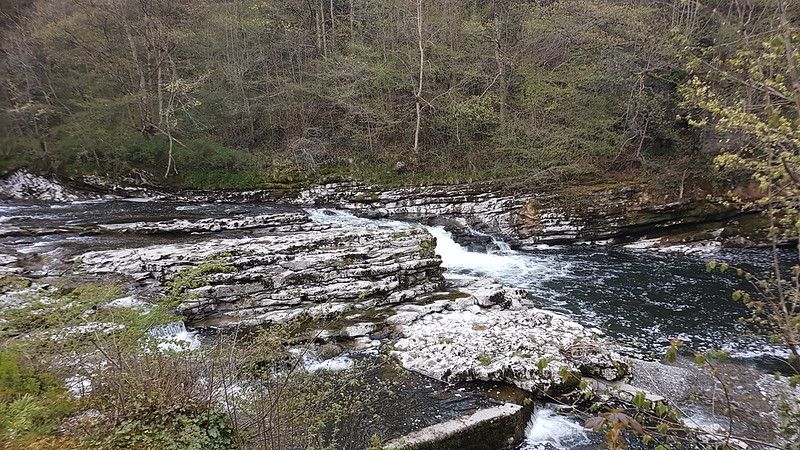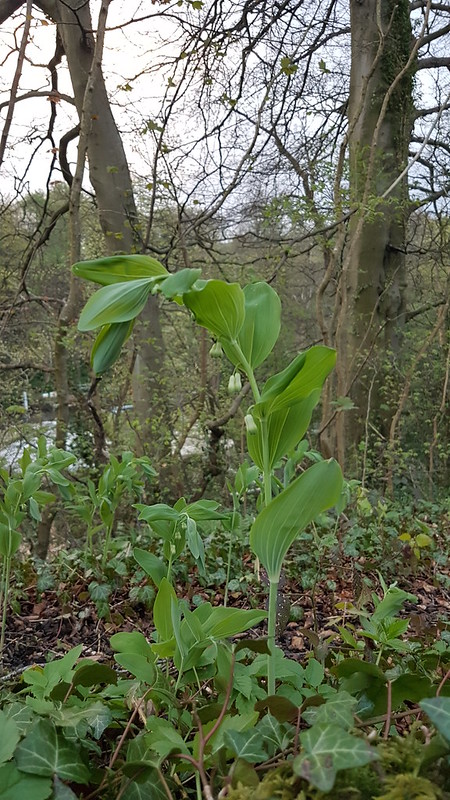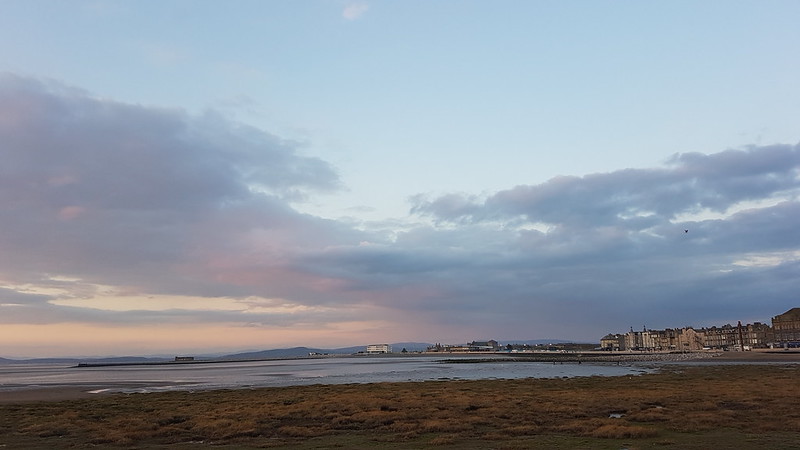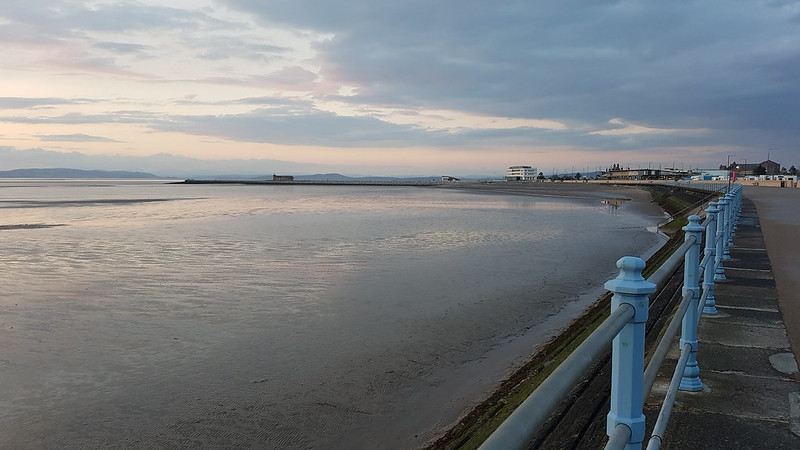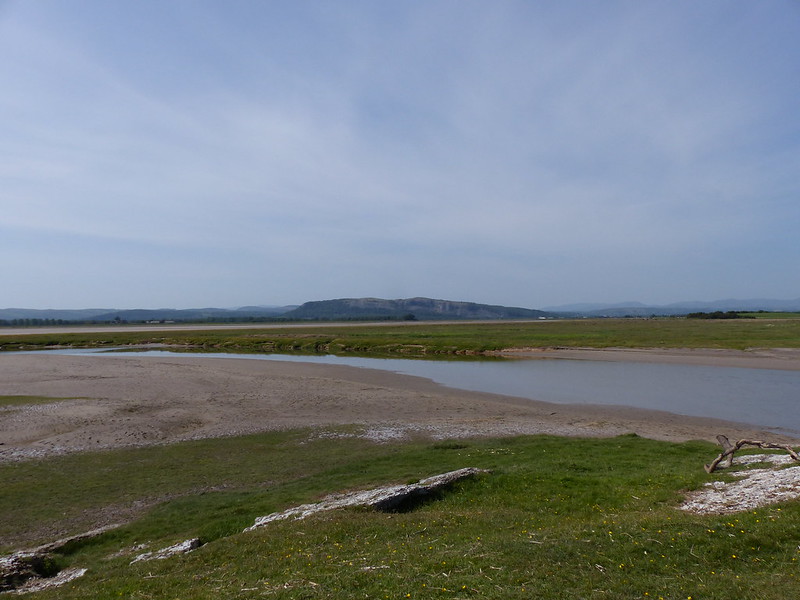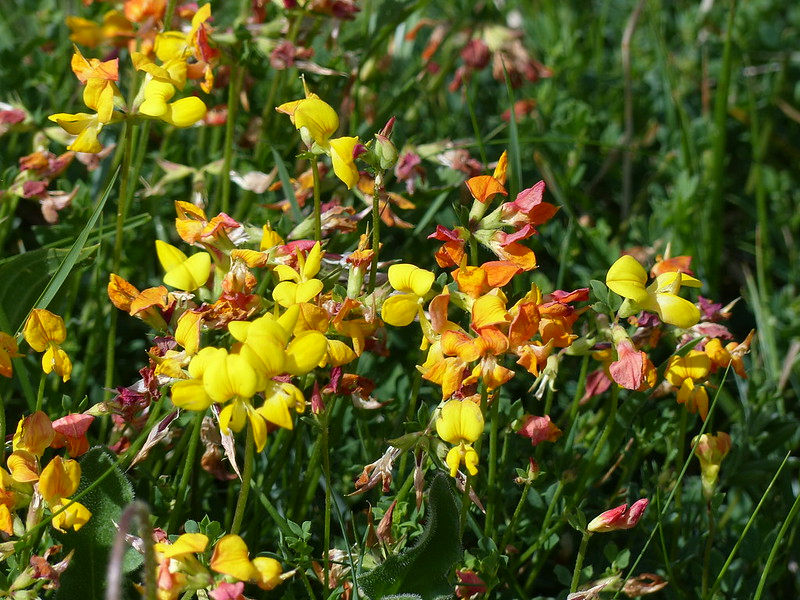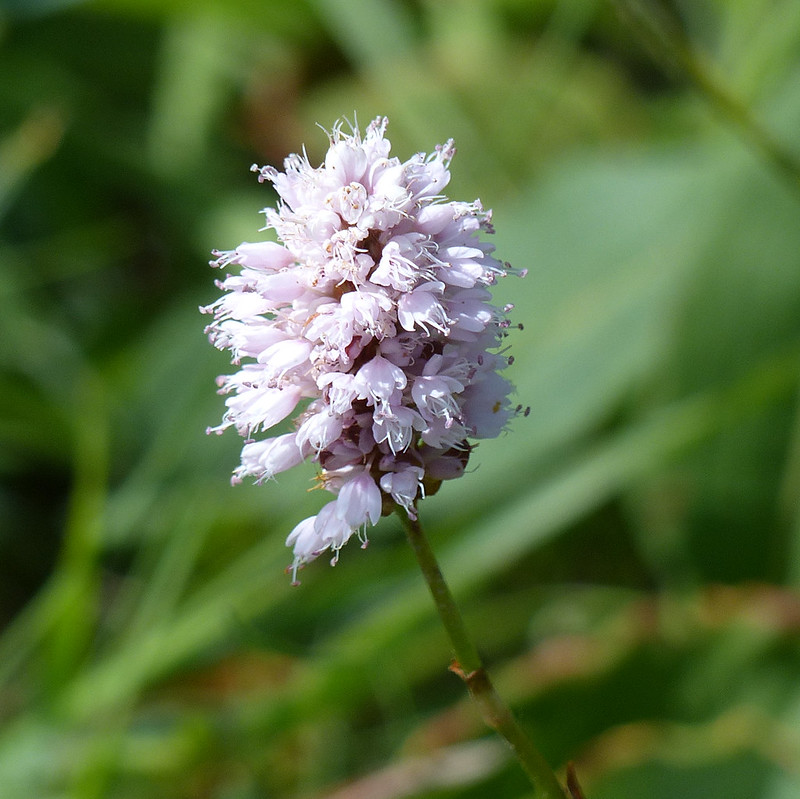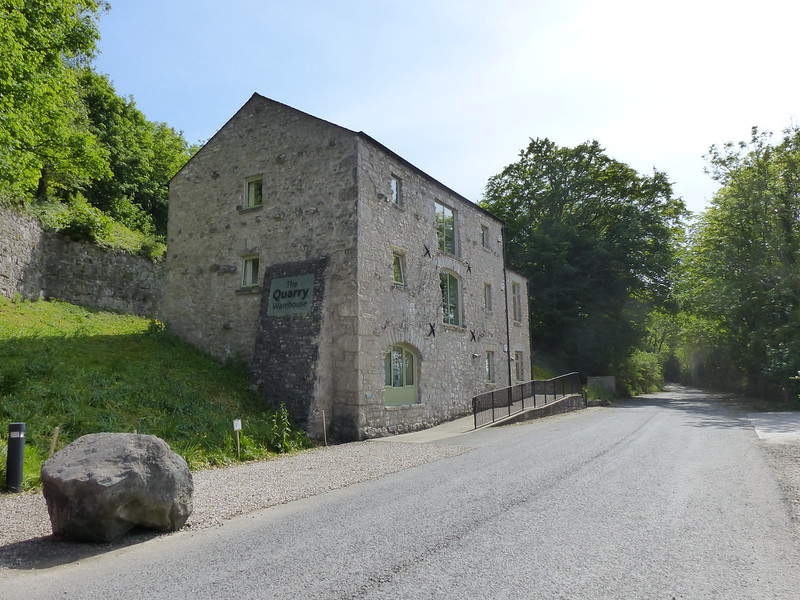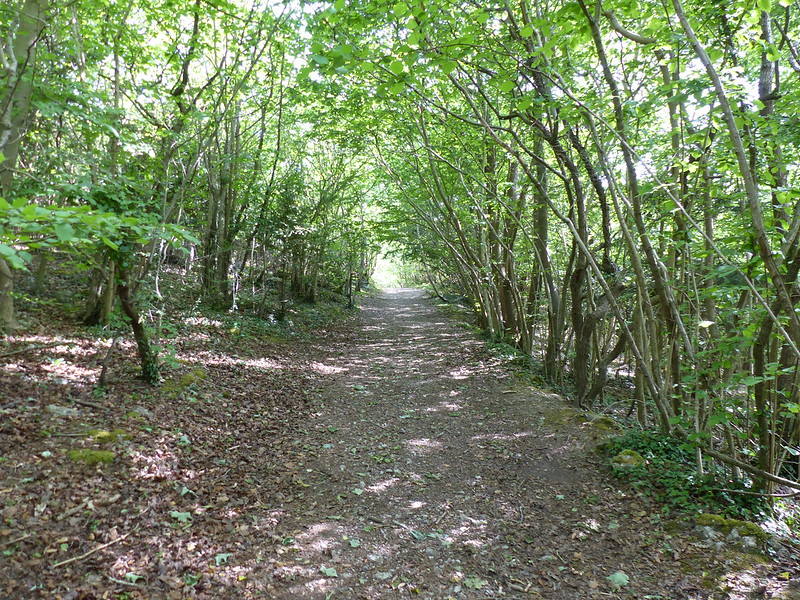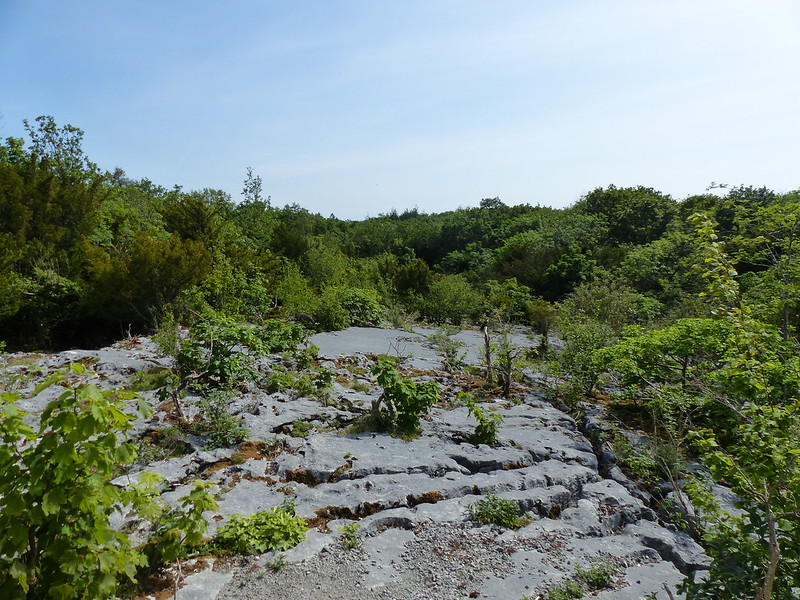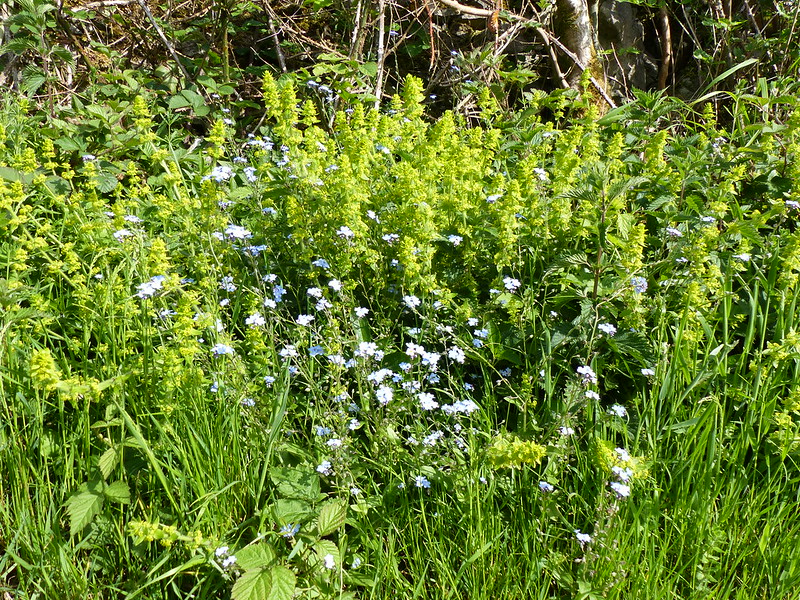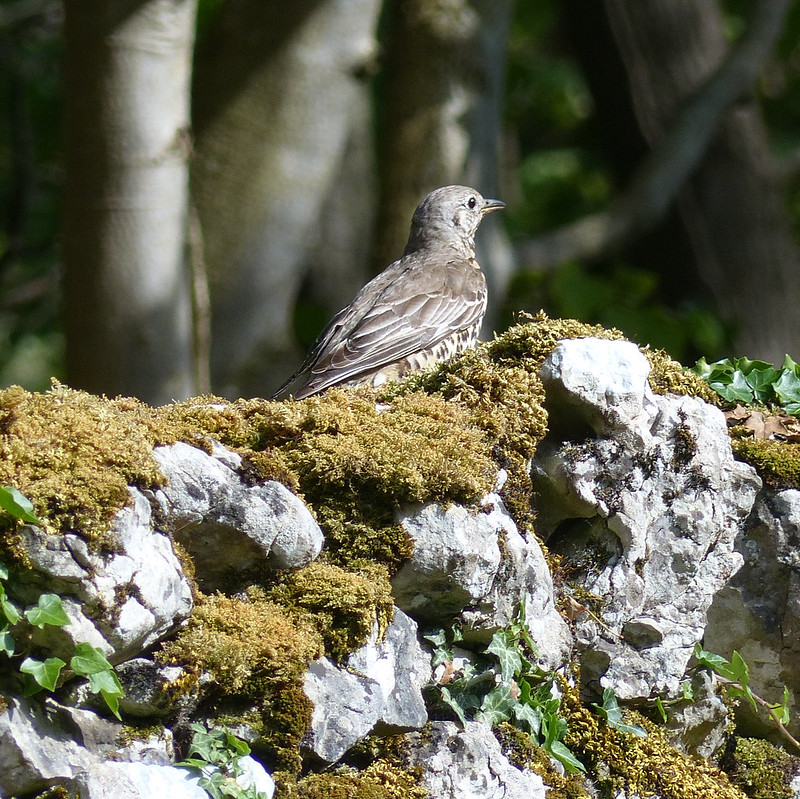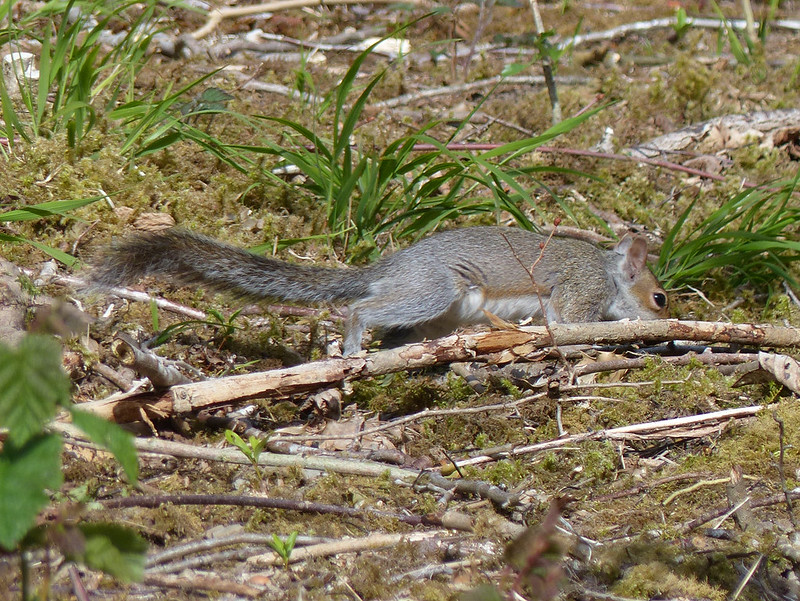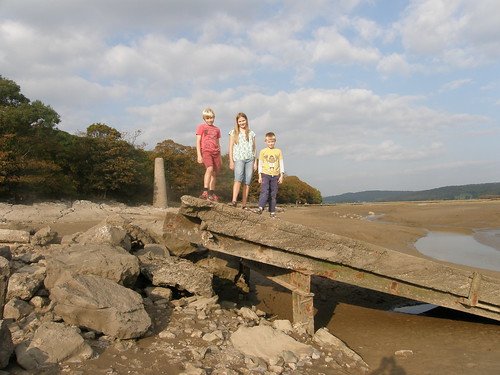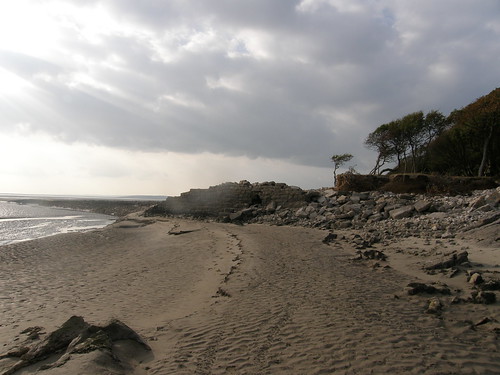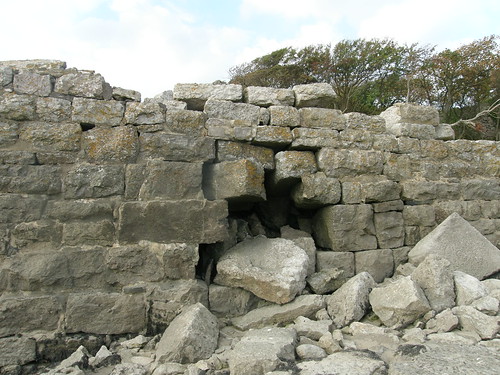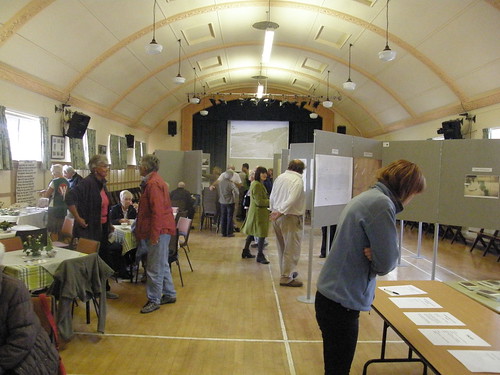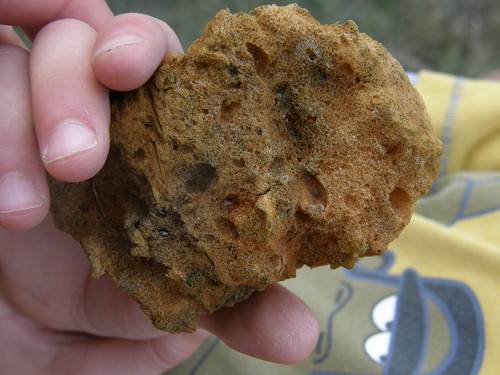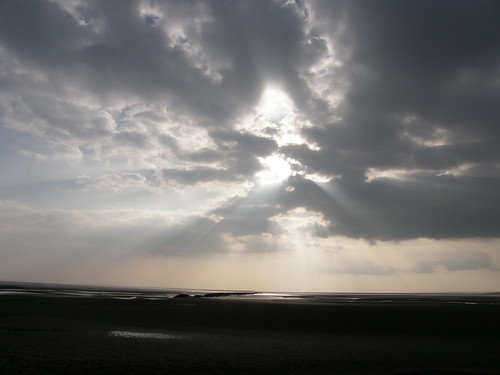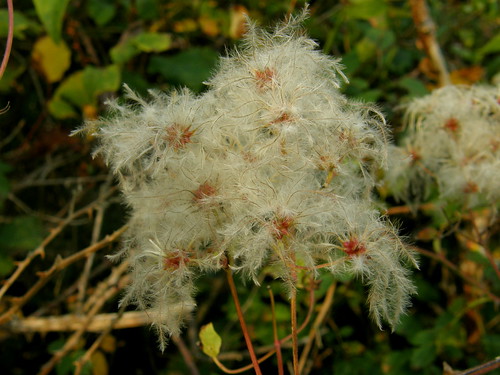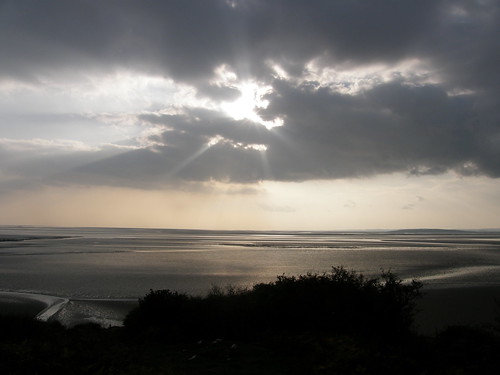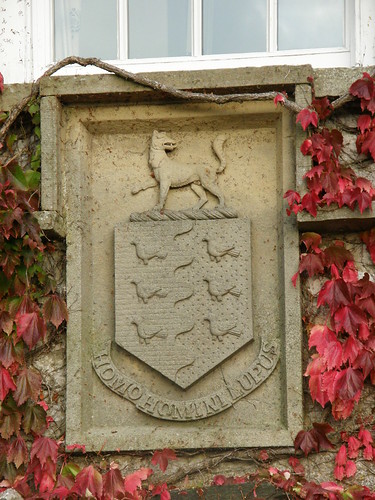Witherslack Hall – Lawns Wood – Knot Wood – Low Low Wood – River Winster – Stang Hill – Cow Head Wood – Way Beck – Crag Wood – Thorphinsty Hall – Low Loft Wood – Little Thorphinsty – Spannel Beck – Gateside Plantation – Rankthorns Plantation – Raven’s Barrow – Cartmell Fell Church – Hodge Hill Hall – Lobby Bridge – Broomer Dale – Coppy Beck – Pool Bank – Low Park Wood – Witherslack Hall.
Featuring: many wildflowers – fine old buildings – a sundog – a raptor attack – an ascent to a viewpoint – a tiny church – stained glass.
Make a cup-of-tea, it’s going to be a long one.

Whitbarrow.
It’s that wonderful time of year again, when the evenings are long, and even sometimes sunny, and my post-work walks can be further afield and longer than they are during the rest of the year.
On this evening, I parked in a convenient little off-road spot, close to Whitbarrow and Witherslack Hall. I wouldn’t be climbing Whitbarrow, but heading the other way, across the Winster Valley, where I remembered from previous trips, years ago, woods that would be brimful of Bluebells at this time of year.

Witherslack Hall and Witherslack Hall Farm (an equestrian centre).

Witherslack Hall. Built in 1874 for the Earl of Derby.
The path took me into Lawns Wood, where there were some Bluebells, but not in great numbers.
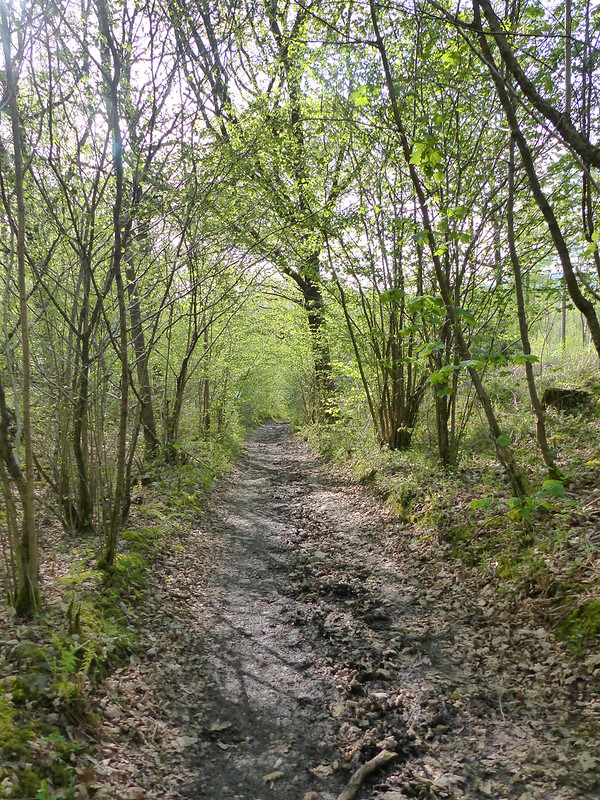
The path through Lawns Wood.
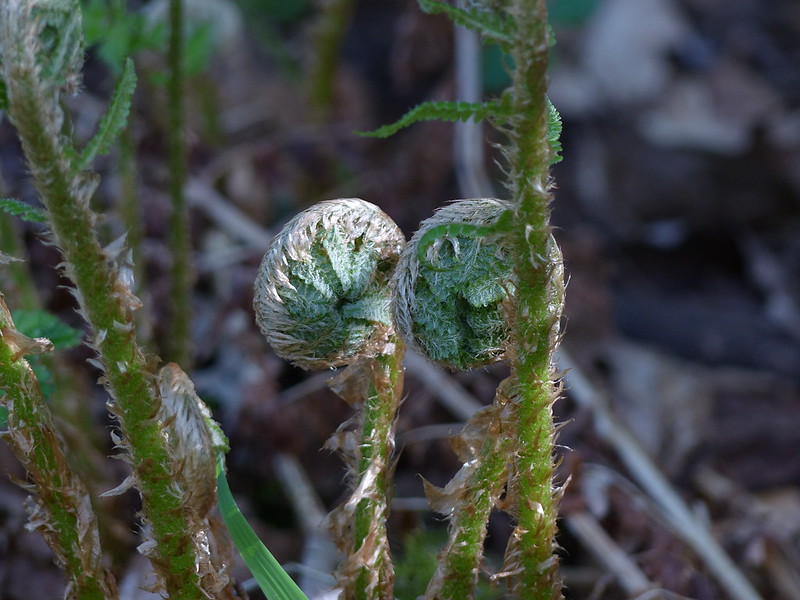
Unfurling ferns.

Hoverfly.
Near the edge of the wood though, the path was lined with that other great spring carpet-forming flower – Ramsons, or Wild Garlic.

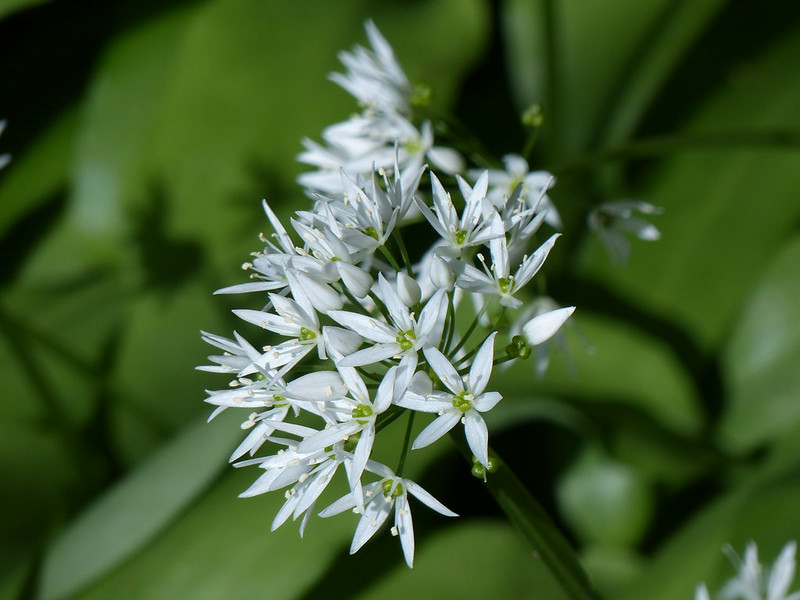
The verges on the lane I soon reached, on the far-side of the wood, were rich in a variety of spring flowers. Here’s a sample of some of them…
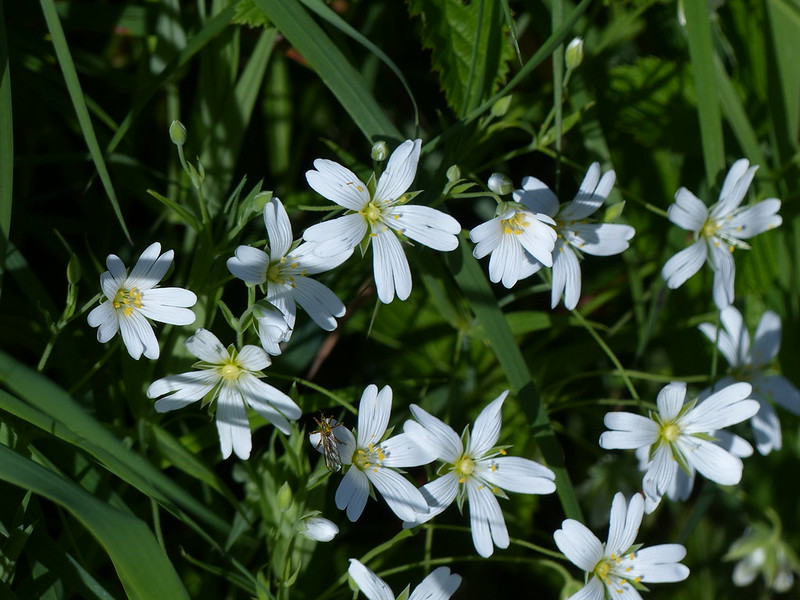
Stitchwort.
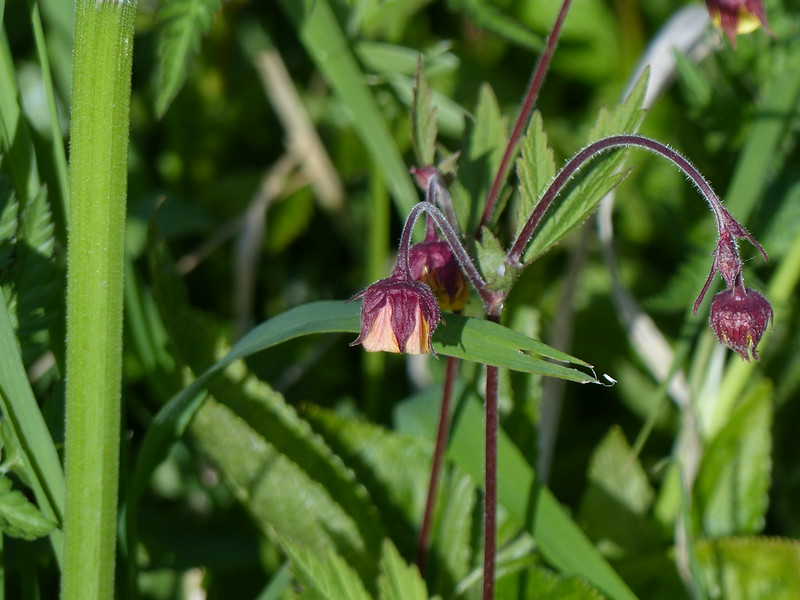
Water Avens.

Jack-by-the-hedge.

Summer Snowflake.
This is a new flower to me, but the striking similarity of the flowers to Snowdrops made it relatively easy to find in ‘The Wild Flower Key’ and then, once I had a name to put to it, to check on the very comprehensive wildflowerfinder website. I get the impression that this is a plant more often found in the south of England and I wonder whether these might have seeded from a local garden.
I often tell my students that one of the things I love about mathematics is that there are always new things for me to learn*; usually after one of them has asked me an awkward question to which I don’t know the answer, or has just solved a problem in a novel way, or had some insight which is either genuinely new to me, or at least is sufficiently obscure for me to have forgotten about it.
I feel much the same way about the flora and fauna, geology, weather phenomena and local history which I encounter on my walks: there’s always something new to see, or to learn about, or at least to ponder on.
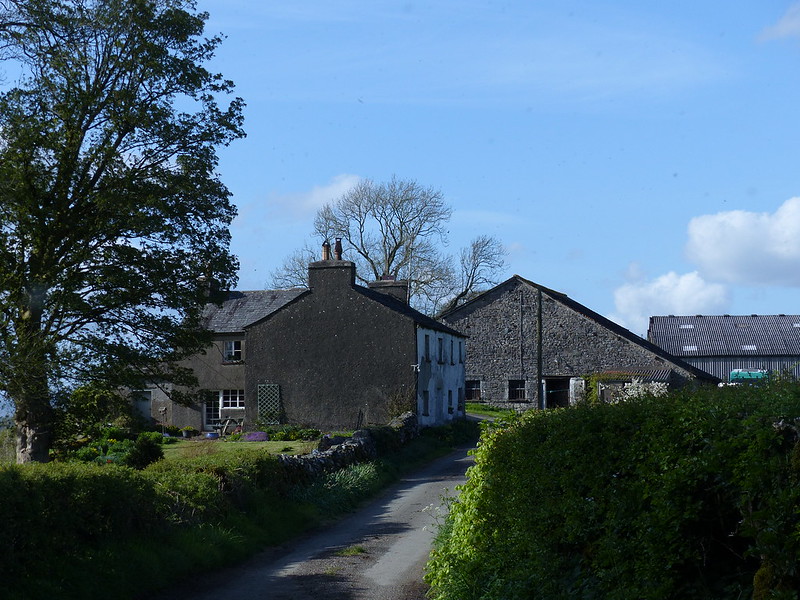
Low Low Wood.
Judging from the OS map, this farmhouse is genuinely called Low Low Wood and further north can be found Middle Low Wood and, better yet, High Low Wood. You couldn’t make it up! Although, having said that, Low Wood, or rather Lowood, has pedigree as a name in English Literature having been the name of the squalid school in Jane Eyre. (A photo of the actual model for that fictional school can be found at the top of this post.)

I’ve been watching for the emergence of oak and ash leaves this year, so that I can check the validity of the old saw…
“Oak before Ash, we’re in for a splash, Ash before Oak, we’ll have a soak.”
It’s been pretty clear that, on the whole, oak leaves have been emerging earlier than ash. So does that mean that we’re in for a hot, dry summer? Well, since the beginning of May, the weather has been unusually fine; in fact, last night I overheard a conversation in which a chap reported that, in fifteen years of living in the North-West, this had been the best weather he had ever experienced+.
Sadly, it seems that Oak leaves usually emerge before Ash, although there does appear to be some correlation between warm springs and the early arrival of Oak foliage.
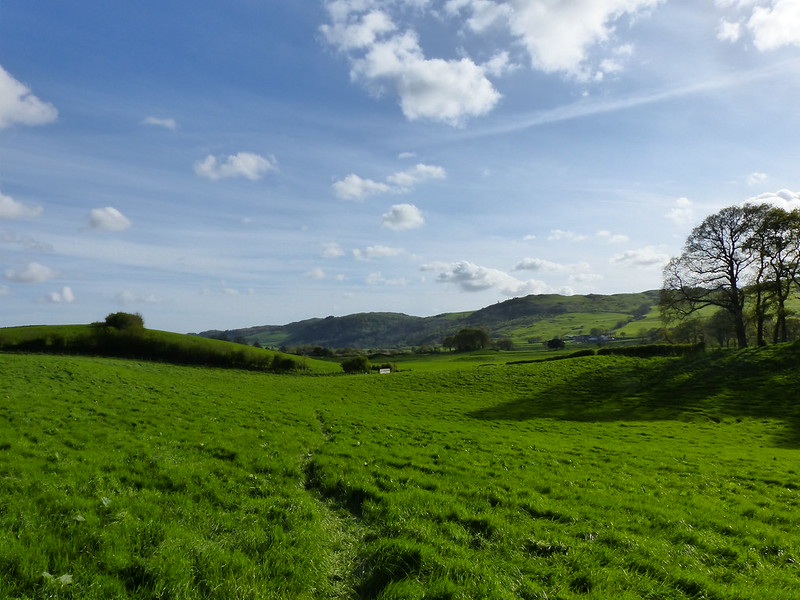
The Winster Valley and Cartmel Fell.

The River Winster.
The map doesn’t indicate a bridge over the river, but I had a feeling that I’d crossed a bridge here in the past and, fortunately, there was a bridge.
The woods of the western side of the Winster Valley, on the slopes of Cartmel Fell, did not disappoint: they were every bit as crammed full of Bluebells as I’d hoped.

Cow Head Wood.
I took no end of photos, but, in honesty, they are all a bit of a letdown. There’s an amazing intensity in the colour of a wood carpeted with Bluebells; a smokey, purple-blue which my photos just don’t replicate. It’s always the way.

What the photos also lack is the heady scent of a mass of Bluebells at the end of a warm, sunny day.

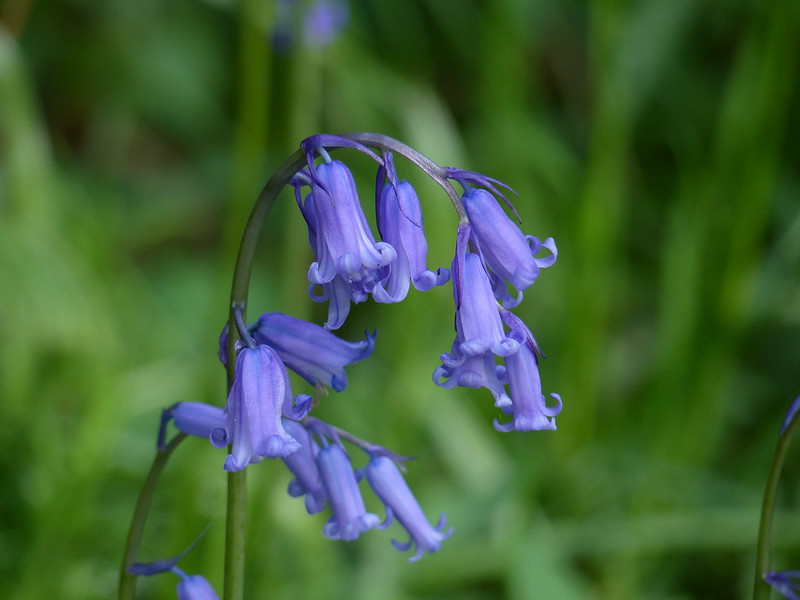
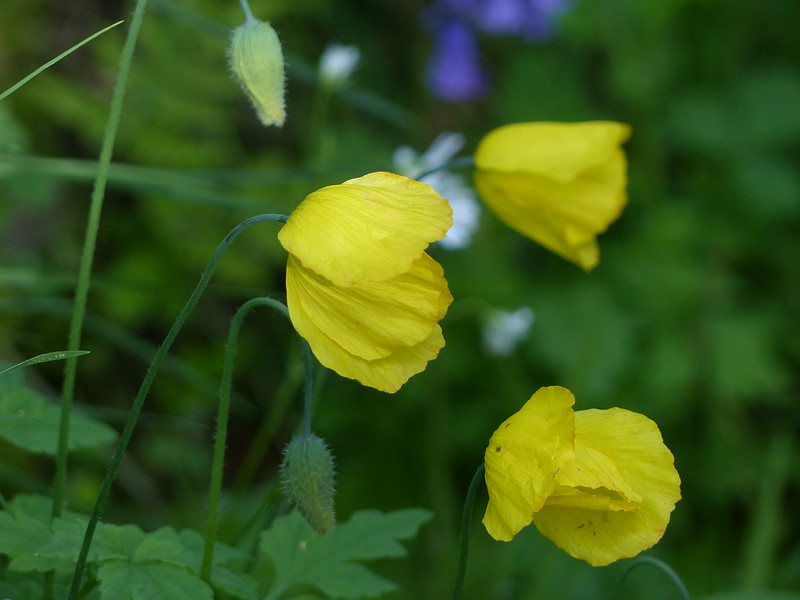
Welsh Poppies.
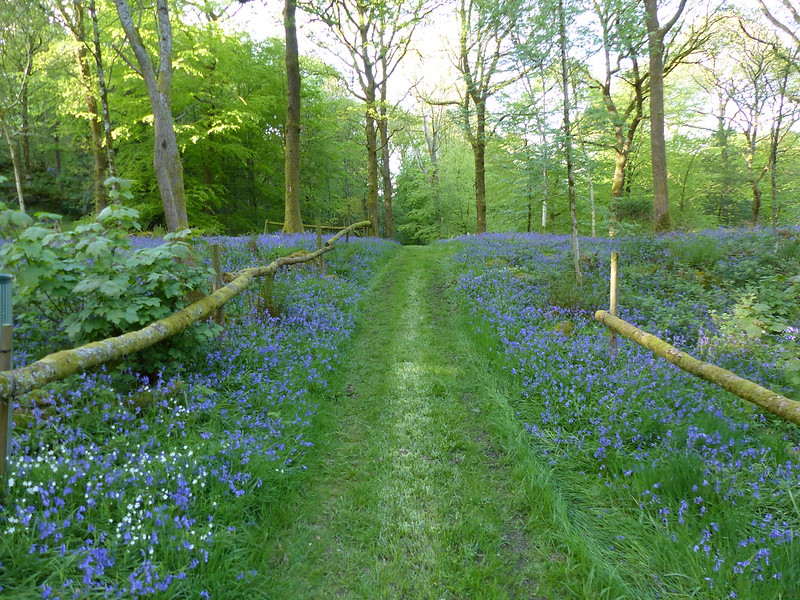
A mown path through the woods!
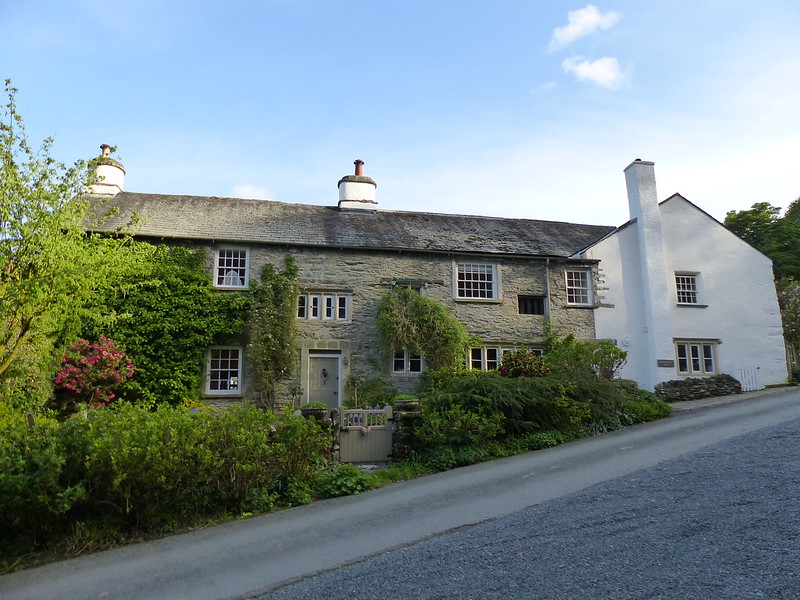
Thorphinsty Hall.
Glorious old buildings litter this area. Thorphinsty hall is a Grade II listed buildings and the two cottages and barn nearby are also listed. Now that I know about the Historic England website (thanks Peter!), I can always find reliable, if somewhat dry, details about old buildings like this one. Not that I always understand what I’m reading. Thorphinsty Hall, for example, has a ‘catslide roof’ and a ‘heck post’#. The lintel over the door is marked 1708, but the according to Historic England the building is ‘probably earlier’.
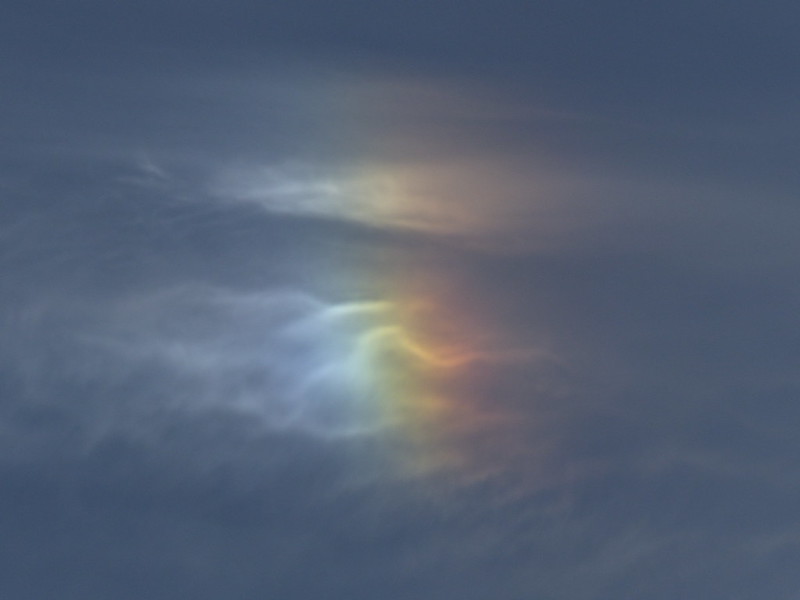
A parhelion or sundog.
In Gateside Plantation I watched a Buzzard land in a nearby tree and then begin to screech in a way which is becoming familiar. I had a fair idea what was coming.

This time, I would hold my nerve and get a prey’s-eye view of a stooping raptor.
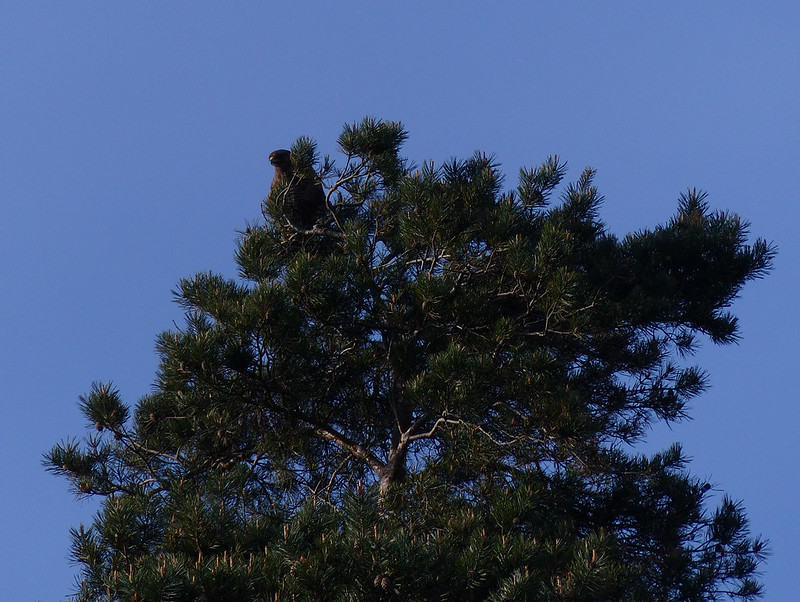
Well, I tried…
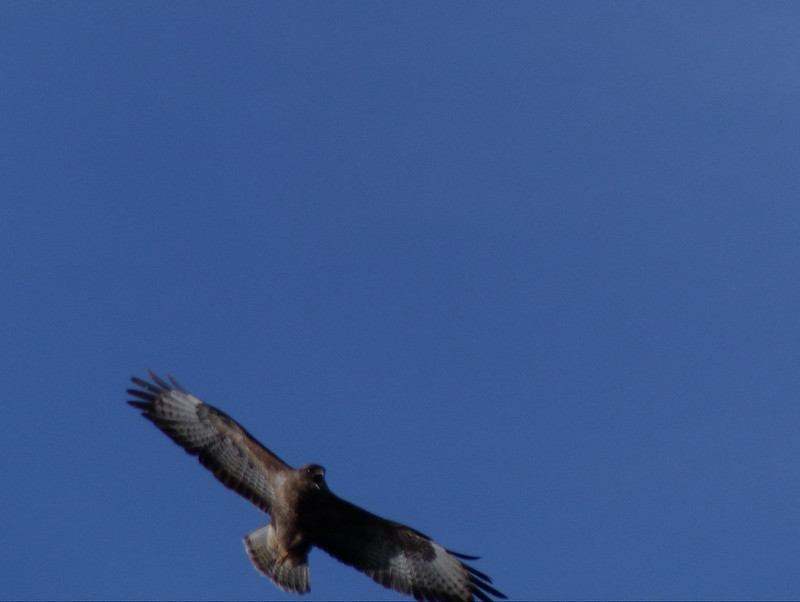
It was moving pretty fast and and I already had the zoom lens fully extended, which probably wasn’t ideal. Presumably, there was a nest nearby. This is the fourth time I’ve been ‘warned off’ by a Buzzard now. This one wasn’t anywhere near as alarming as the first, when a Buzzard made several, close feints at my head, but it was a much closer and more threatening approach than the two times it happened last spring: once near Crummack when the tiercel – it always seems to be the tiercel, the smaller male bird – flew towards me a few times, but on each occasion turned back before getting too close; the other time in woods above the Wenning Valley when both birds circled menacingly but didn’t get any more aggressive than that, a ‘warning’ so undramatic that I subsequently forgot to mention it in the relevant post.
That first dive having come pretty close I retreated behind the small Hawthorn…
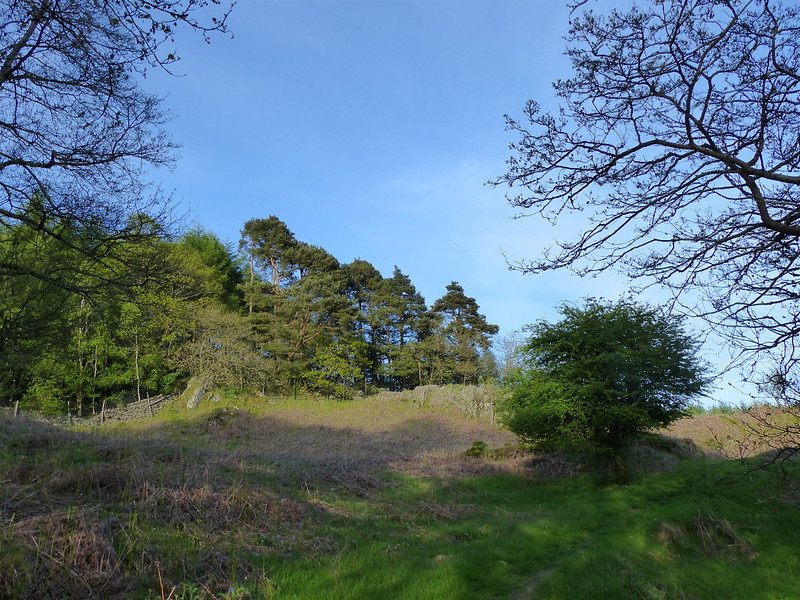
…in this picture. Both Buzzards were now in the pines opposite. As I moved on the tiercel came back to make another, rather half-hearted swoop.
I’ve been admonished in the past, probably quite rightly, for being too specific about the location of Badger setts, so I shan’t say quite where, but I did pass some I haven’t seen before during this walk. I didn’t see any Badgers, but plenty of evidence of their recent presence.

Yewbarrow, Arnside Knott, Winster Valley, Cartmel Fell.
I climbed a little here, up to Raven’s Barrow…
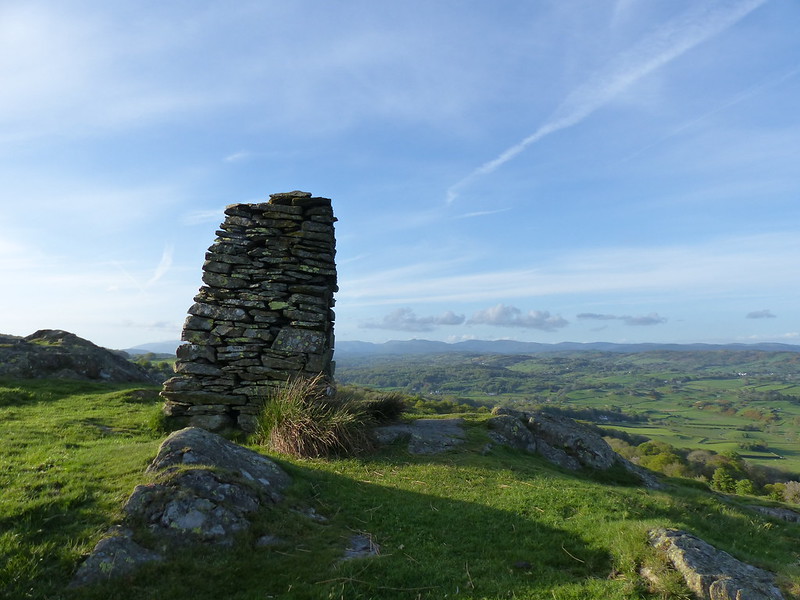
This large cairn, which has a small seat built into it, doesn’t mark the top of a hill, but it is a magnificent viewpoint, despite it’s modest elevation.

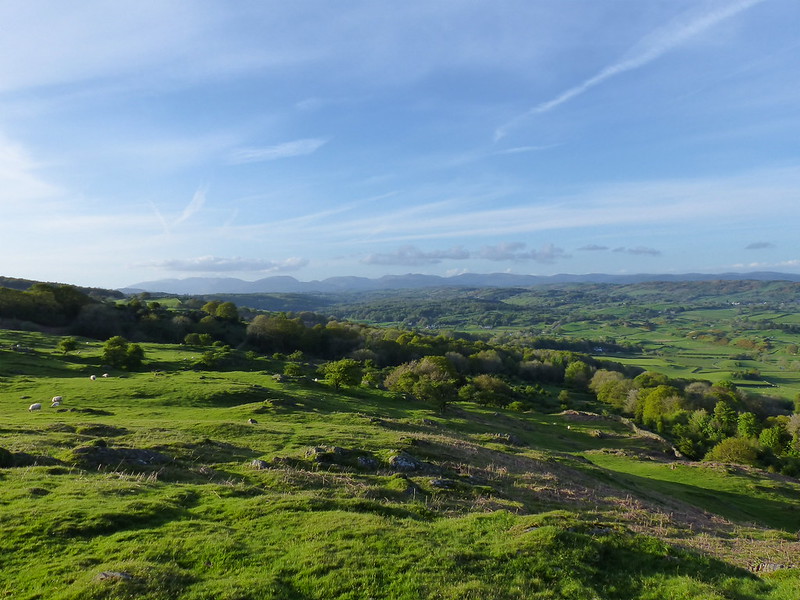
Looking north to the higher hills of the Lake District.
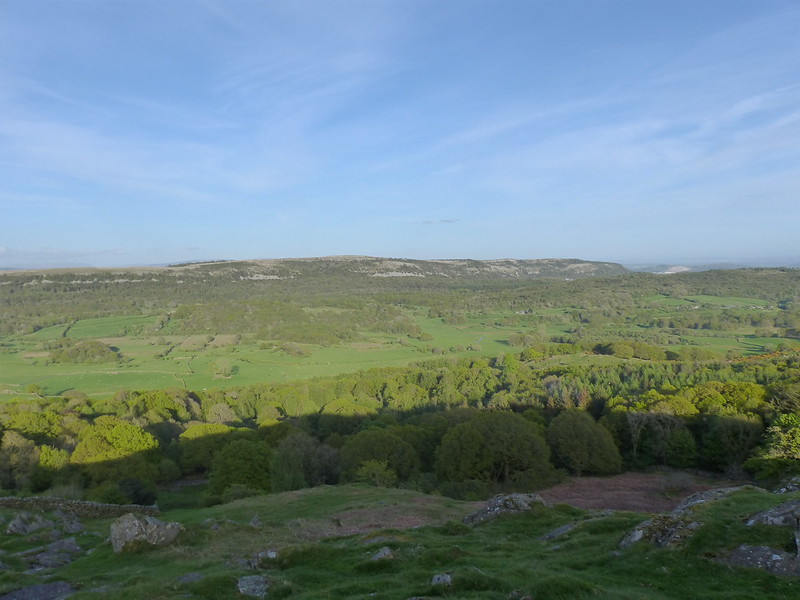
Whitbarrow Scar.

Raven’s Barrow pano.
I’d originally planned to stop here to make a brew, but there was quite a cold breeze, so I dropped down to St. Anthony’s instead…
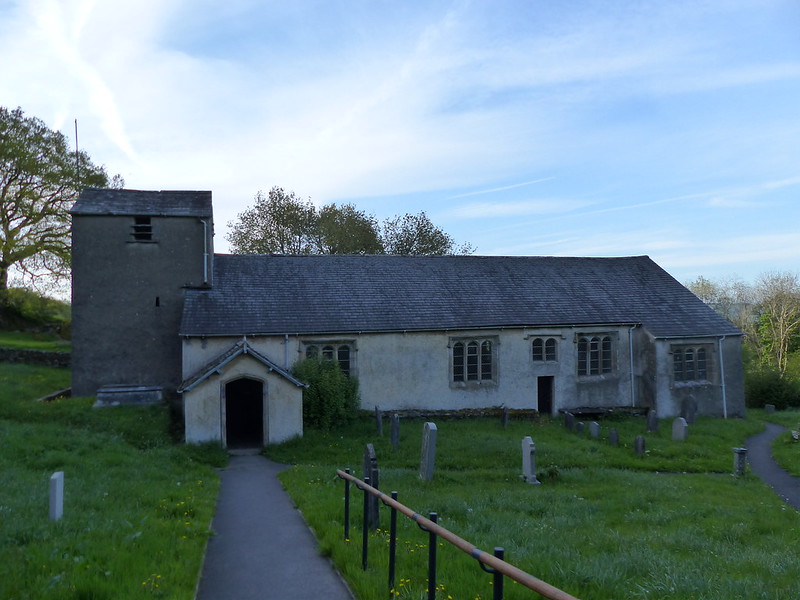
This tiny church is in a wonderfully peaceful spot. There’s a photo of it in this post, from a walk at an earlier time of day, when the sun was still shining on it. It must have been an earlier time of the year too, because the churchyard was still full of Daffodils.
Time was marching on, but I decided that I had a moment for a quick peek inside the church. It was built in 1504 and inside there’s a plaque naming all of the priests back as far as 1520.

This unusual, triple-decker pulpit…

…has been used by a few of those priests, having been added in 1698.
This box pew…
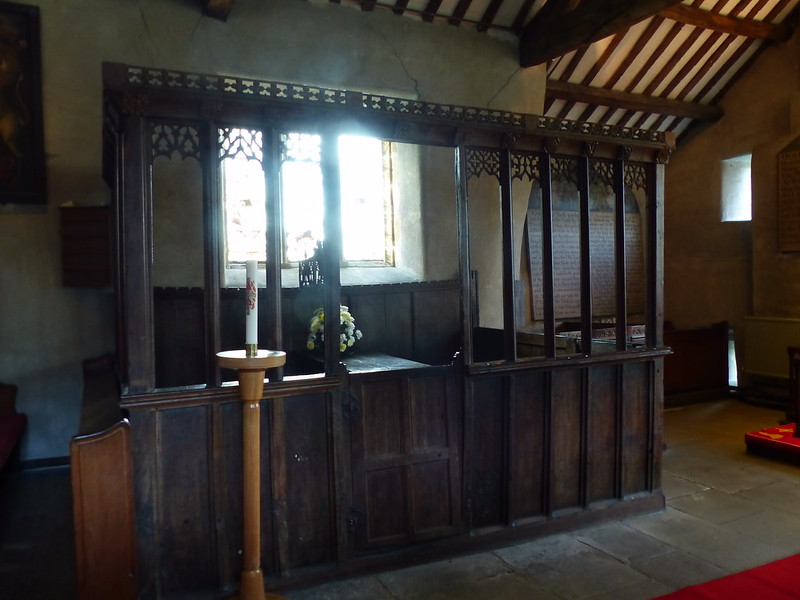
…is even older, having been fashioned from the chancel screen in 1571. Whilst this one…

…known as the Cowmire Hall Pew, is Seventeenth Century. I haven’t walked past Cowmire Hall, I don’t think, I shall have to add it to my list of places to visit.
It struck me that much of the stained glass looked very old.
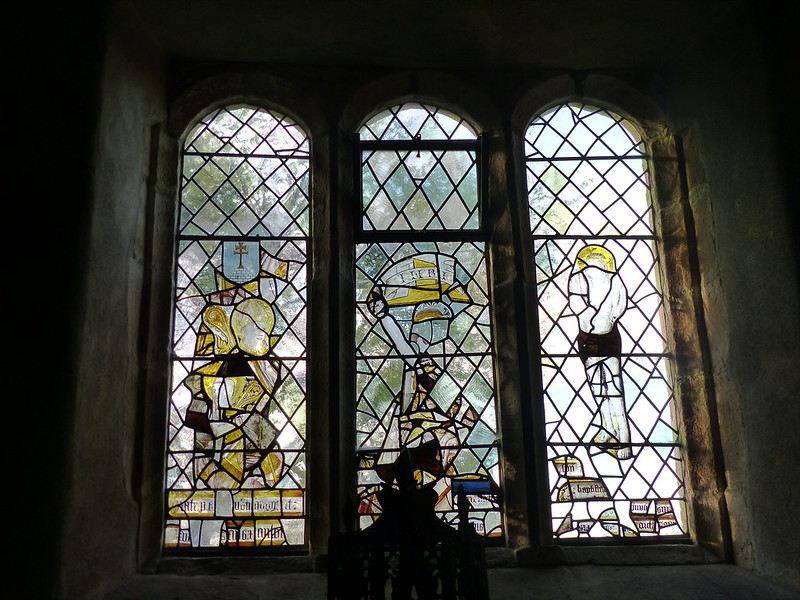
Apparently, much of it is Fifteenth Century and originates from Cartmel Priory which also once provided the priests for this church. I haven’t been to the Priory for an age either, something else I need to put right.

The East Window.
The figure on the left of the East Window, who has a bell, a staff, a book and a small pig, is St. Anthony. Amongst other things he is the patron Saint of charcoal burners, an industry once very much identified with this area and perhaps the reason for the Church’s dedication. Apparently, the window contains some Coptic symbols associated with this desert hermit, but I’m not clever enough to pick them out. The figure on the right is St. Leonard, patron saint of prisoners and the sick.
I have a little book, “Lakeland Country Churches’, by Sheila Ricketts, from which I’ve gleaned much of the preceding information, but there are many other features which the book doesn’t mention.
This for example…

…which I assume is St. Anthony again. And his pig.
This…

…is Hodge Hill Hall, like St. Anthony’s, another listed building. ‘Possibly dating from 1560’.
I had had an overly ambitious idea that I might recross the valley and climb Whitbarrow, but I decided that I’d already packed enough in for one day. The sun was sinking fast and seemed to be in agreement…
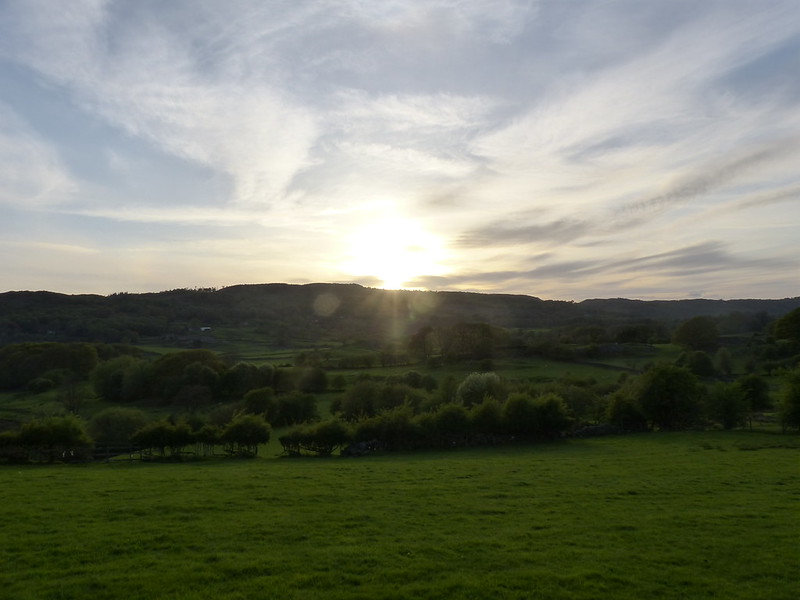
At Pool Bank there are a number of superb old buildings, but they were in shade, so I shall have to come back some time to take more photos.
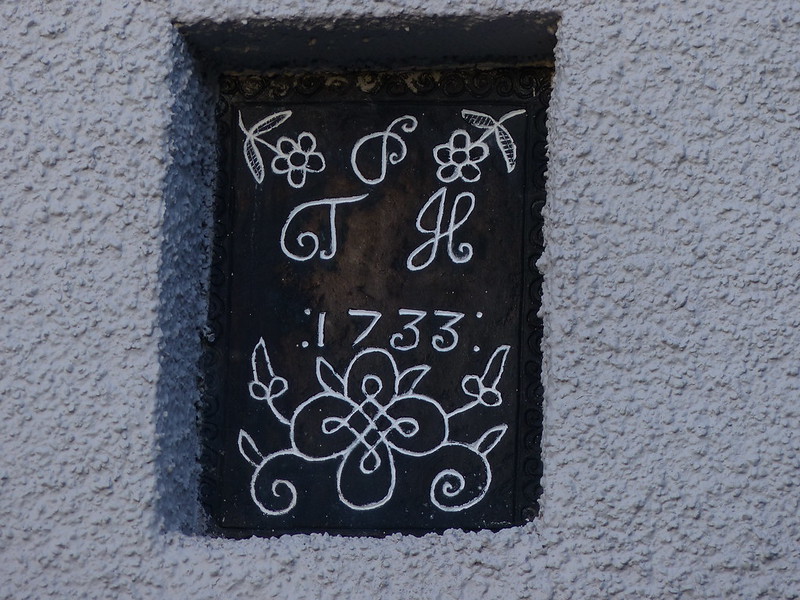
As I approached Witherslack Hall again, on the minor road through Low Park Wood, I came to an open field where a horse, presumably one belonging to the equestrian centre, was rolling on its back with what seemed to me to be obvious relish. A pair of Greylag Geese ushered their tiny, fluffy brood across the field and shooed them past the horse. Time for me to go home to check on my own brood.


Around 8 miles with 250m of ascent.
*This is an understatement of such magnitude that ‘understatement’ isn’t really a strong enough term to describe it. There’s a vast ocean of known mathematics, of which I have glimpsed into a tiny rock-pool, and beyond that there are presumably yet more, as yet unexplored and unimagined, oceans of new mathematics waiting to be discovered (or invented – there’s a debate to be had there, but not here and now). If this seems like false modesty, it isn’t, and you should bear in mind the fact that Henri Poincaré, who died in 1912, was dubbed, by the historian of maths E.T. Bell, ‘the last universalist’, i.e.the last mathematician who understood all of the mathematics which was known during his time.
+He has a short memory: we often have a protracted fine spell during the spring.
#I looked them both up, and sadly the actual meanings are rather prosaic – a catslide roof is a roof which continues below the line of the eaves of a house and a heck is a northern term for a short panel between the fireplace and the door, usually ending with a heck-post. Does this, I wonder, explain the origins of the phrase ‘flaming heck’?
